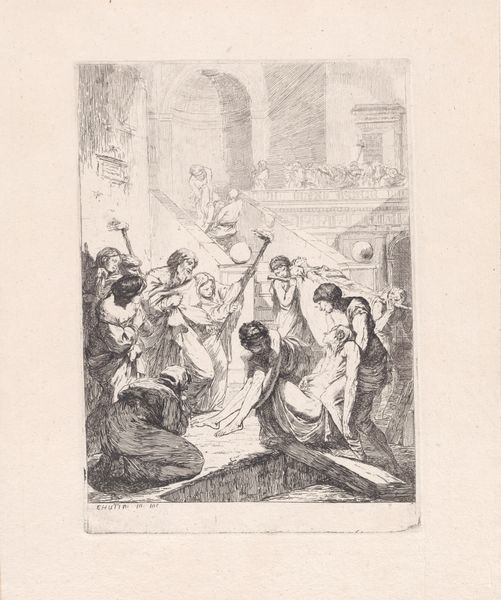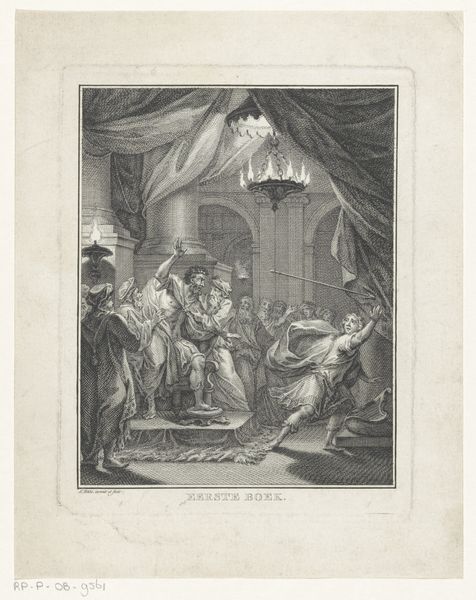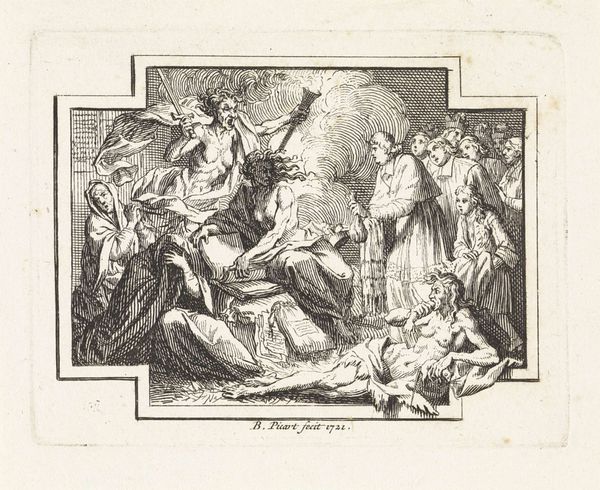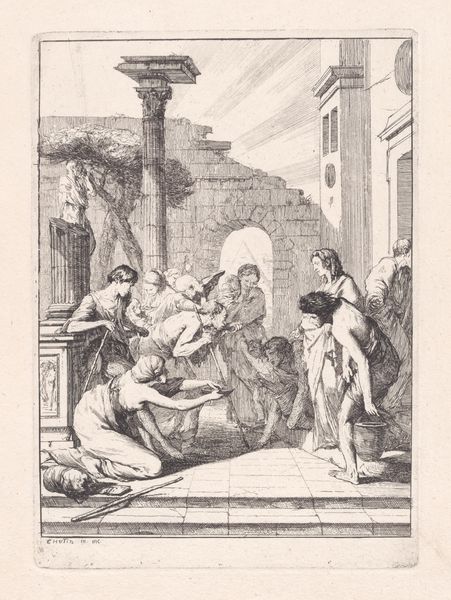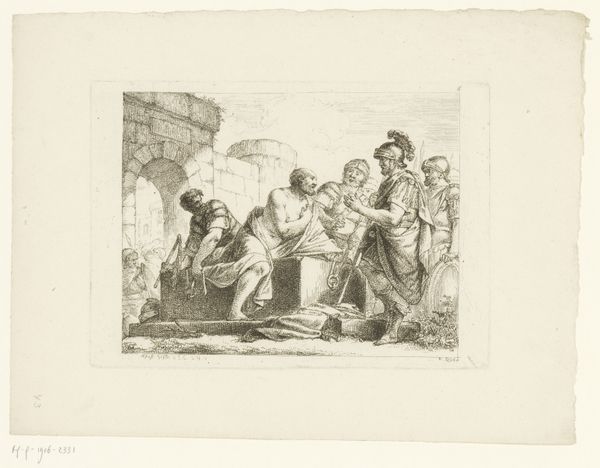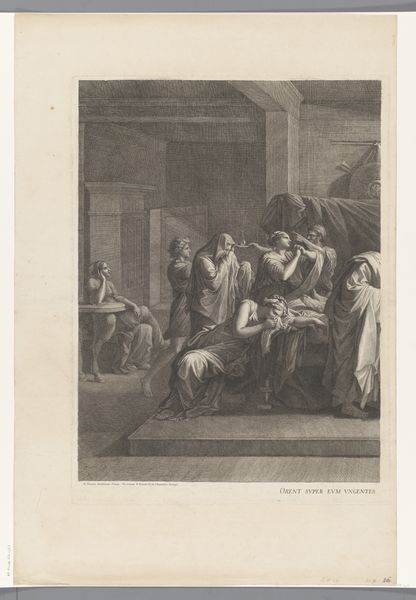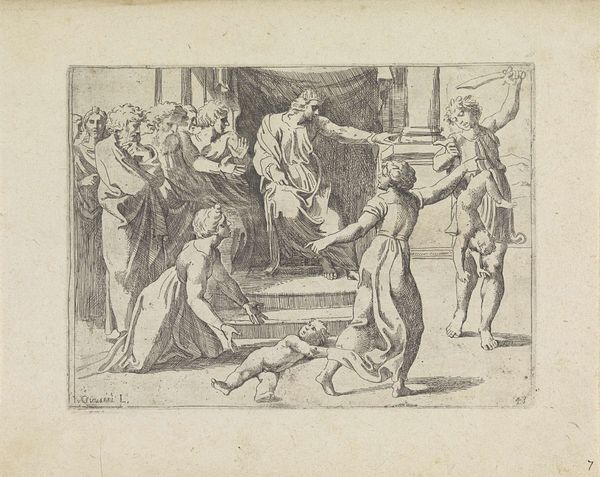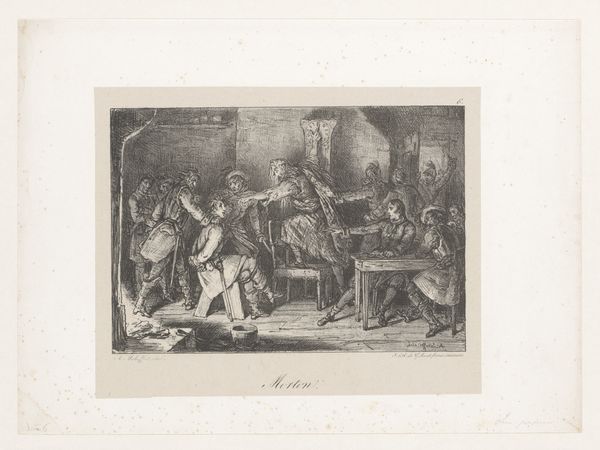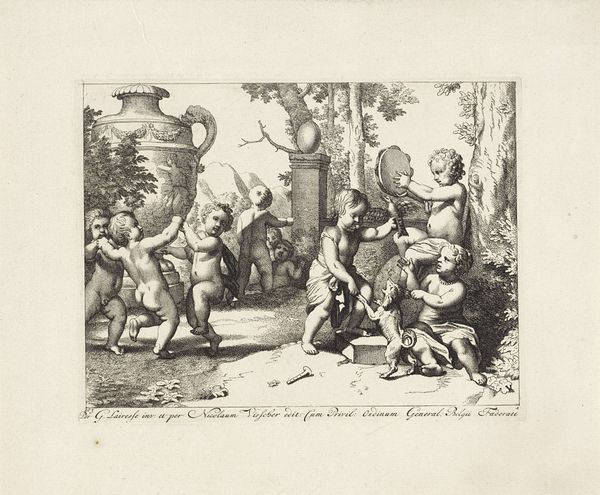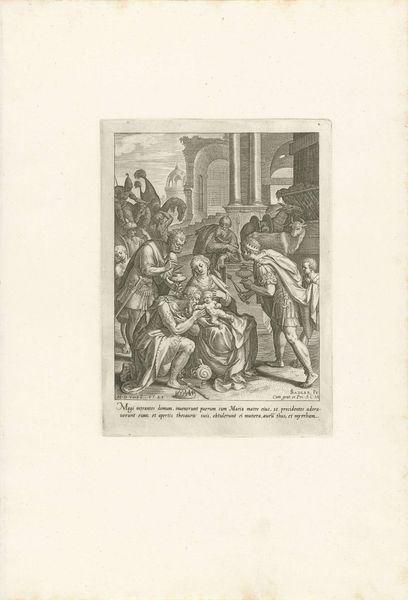
drawing, print, etching
#
drawing
#
narrative-art
#
baroque
# print
#
etching
#
old engraving style
#
figuration
#
pencil drawing
#
line
#
history-painting
Dimensions: Sheet (Each): 11 11/16 × 9 1/2 in. (29.7 × 24.2 cm) Plate: 8 7/8 × 6 13/16 in. (22.6 × 17.3 cm)
Copyright: Public Domain
Curator: This print, residing here at the Met, is entitled "Visiting the Imprisoned." François Hutin created this etching sometime between 1732 and 1763. Editor: It's… heavy. The density of line work almost overwhelms the scene, lending a claustrophobic feel right away. There's an intensity created by this contrast of light and shadow. Curator: The subject certainly lends itself to a heavy interpretation. It comes from the biblical acts of mercy, and it depicts people visiting someone languishing in what seems to be a prison. Hutin has emphasized verticality with the bars in the architecture which enclose the subject. Editor: Those barred spaces act as a kind of visual net, both separating and framing the different groups within the composition. How much do we know about this depiction's historical context, of prisons at the time? Curator: In 18th-century France, imprisonment was often a tool of arbitrary royal power, as famously shown in the Bastille prison which held political prisoners until the revolution. It also comes at a time when Enlightenment ideals questioned penal systems; some reformers advocated for more humane prisons. Prints such as these served a valuable social function, calling attention to conditions, circulating and generating debate. Editor: The architecture here, all those precisely hatched lines, looks rather forbidding and powerful. Look at the scale relative to the prisoners. But in terms of art making, do you think that is solely illustrative, or part of a more intentional structural approach from the artist? Curator: I believe it serves to heighten the emotional impact by reinforcing feelings of helplessness in such confined spaces. Hutin skillfully directs our gaze using strong diagonals, connecting the visitors to those held captive. It also shows the artist making a clear compositional decision for this picture's architecture, even a conscious selection of this perspective. Editor: I agree, and it strikes me now how little actual light seems present, even coming from the torches! It must've been miserable inside there! Curator: Absolutely! The drawing allows viewers today a poignant glimpse into this somber aspect of 18th-century life. Editor: Seeing how meticulously each figure and stone has been drawn, though, invites a meditation on compassion for all mankind, perhaps even those on either side of those dark prison bars.
Comments
No comments
Be the first to comment and join the conversation on the ultimate creative platform.
